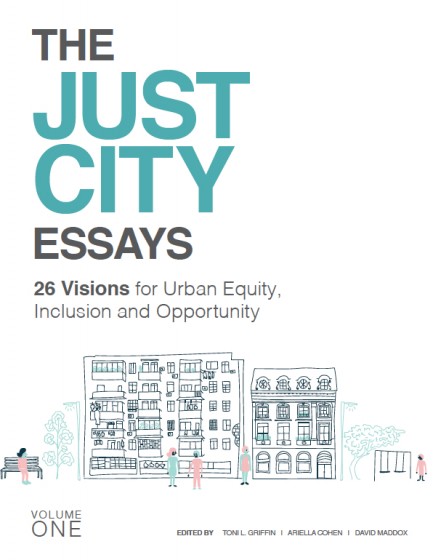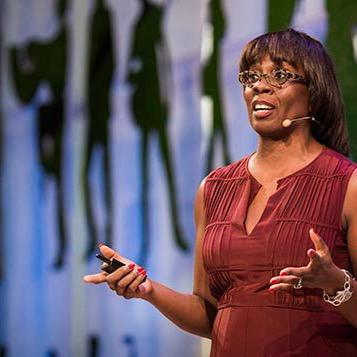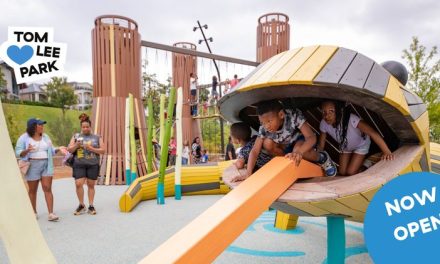Three years ago, students of color at Harvard University’s Graduate School of Design convened a conference to discuss how social justice issues could become centerpieces in city planning and design.
Today, it is a movement. Memphis needs to be part of it.
It gained momentum last October with the second Black in Design conference at the university where it was born when a group of students simply asked a question: how could architects, planners, and designers affect racial justice issues in U.S. cities?
Too often, systems of planning and design are built on a universal approach, and as a result, they yield universal solutions without deeply considering the needs and values of different groups, particularly of black and brown people. Because of it, plans and design often don’t have the impact they seek in making a difference in people’s lives.
Changing Business As Usual
When we develop systems that by their nature are built on structural racism and inequity, it is unsurprising that these systems can’t change business as usual. More to the point, it is not possible for them to change the systems from which they spring.
It explains why collective impact, when it’s done right, is built on the principles of racial equity, diversity, and inclusion; however, the real test is for all segments of a community to share a commitment to disrupting existing systems. Anything less results in people of color’s low expectations of fundamental change being reinforced and less confidence by them in the process producing disruptive innovations and real progress.
That’s why real success requires setting goals – and measurements – that are disaggregated by race and ethnicity. For example, it’s not enough to say we’re going to raise incomes for low-income residents. Rather, it has to say we are going to move more African Americans from poverty into the middle class.
As PolicyLink’s Angela Glover Blackwell said in her comments in Memphis at the conference about the Blueprint for Prosperity, a plan to reduce the poverty rate by 10 points in 10 years: “Equity is the superior growth model,” pointing out that if the average income for people of color was the same as whites in the Memphis region, it would growth the economy by $20 billion.
Designing The Just City
Our friend and a favorite city planner, Toni Griffin, organized Harvard’s recent Black in Design conference. She is professor of urban planning and founder of the New York-based Urban Planning for the American City and creator of the Design for the Just City, which now has a Just City Lab at Harvard University.
It has been described as the kind of racial justice-focused course that students of color wanted but which didn’t exist. As executive director of New York City’s Public Design Commission said: “The (Just City Lab workshop) was perhaps the most technical and hardest work of the conference, the kind of work that most of us don’t get to do a lot of, because we’re often too busy just advocating for being visible. I think the (Black in Design) conference having that workshop was doing the work of giving people more tools and ore skills for how to go back and actually do something.”
The desire for higher impact planning and design is hardly limited to students at Harvard and our community could benefit from getting involved and applying the framework sooner rather than later. After all, so much of Memphis’ progress in the future hinges on our success in becoming known for being a city of racial justice and economic opportunity.
That’s not to say that change comes easily. The BlackSpace network of African American urban planning developers and policy makers held a conference simultaneously with the American Planning Association conference after their suggestions for social justice-focused workshop ideas were turned down. And yet, the BlackSpace conference attracted more than expected, and APA has now decided to add a social justice track for next year’s conference.
Principles And Values Of The Just City
There is nothing quite like an idea whose time has come. Because of it, we’re expecting for the Just City framework to be integrated into the philosophy and practices of planners and architects at an accelerated pace. There’s no reason that Memphis should not be first among them.
A good place to begin is to contact the Just City Lab with the request to conduct a Lab here as an incubator of ideas about planning and design that focus on the values of racial justice and racial equality and also to create the metrics for measuring how well Memphis is or is not creating a “just city.” In the meantime, we should read and think about how the Just City Index and its 12 principles and 50 values can shape thinking and work here.
After all, Ms. Griffin already knows an awful lot about Memphis as a result of her pre-planning work for what became the Memphis 3.0 comprehensive plan.
We wrote about this last June in two posts entitled “The Back Story of Memphis’ Comp Plan.” Part 1 focused on her overview of the process and questions to be answered. Part 2 dealt with her insightful preliminary conclusions about Memphis.
Three Conditions Of Urban Injustice
In October, 2015, we remember well when we read The Just City Essays: Visions for Urban Equity, Inclusivity, and Opportunity because they spoke so strongly and directly to Memphis. Among the essays was Ms. Griffin’s own, and she explained (the remainder of this blog post are her words – italics are ours):
My work in architecture, urban design and urban planning spans several cities in the U.S., including Chicago, New York, Washington, Newark, Detroit and Memphis. All of these cities have similar racial patterns of segregation, and all have similar urban conditions, thanks to the impact of segregation on people and place. I would eventually come to know these urban conditions as the environments of social and spatial injustice. I now simply call them the conditions of urban injustice or justice. I define urban justice as the factors that contribute to our economic, human health, civic and cultural well-being, as well as the factors that contribute to the environmental and aesthetic health of the built environment.
There are three conditions of urban injustice…the first urban injustice condition is concentrated poverty. On the ground, spatial segregation has created pockets of concentrated poverty in our cities that, in turn, have created spatial and social isolation of those cities’ residents. Over multiple generations, this isolation has had a devastating impact on family structures, social networks, educational systems and access to economic opportunity…
The second urban injustice condition is disinvestment, crime and the architecture of fear. In the mid-1960s, attempts were made to revitalize the center city (note: she is referring to Newark, where she was director of planning and community development for Mayor Cory Booker between 2007 and 2009) through programs such as Model Cities, a federal program that brought funding for redevelopment into communities with the greatest social and physical deterioration. However, the civil unrest of 1967 deepened disinvestment, and the city’s reputation for high crime and political corruption limited its ability to attract widespread capital investment for many decades.
And the third urban injustice condition is socio-economic division. From 2000 to 2006, while serving as deputy planning director under Washington Mayor Anthony A. Williams, I saw that spatial segregation sharply divided the city along the north-south axis marked by Rock Creek Park and the Potomac River, separating rich and poor residents by employment status, income and educational attainment. Fifteen years later, residents of color see that this dividing line is pushing swiftly eastward; they fear they will be pushed across the Anacostia River and, ultimately, outside the city limits.
More Than Livability
My just city is also for women, children and people of color, or what the PolicyLink CEO, Angela Blackwell Glover, calls “the least not.” At the center of these environments of urban injustice, I find an increasing number of women, children, immigrants and people of color struggling to stake their claim in the just city. National trends report that women are poorer than men in all racial and ethnic categories.
Some 75 percent of all women in poverty are single, with over a quarter of these women being single mothers, according to the Center for American Progress. Nearly a third of all children in this country live in poverty, giving the U.S. the sixth highest poverty rate for children out of the forty-one wealthiest countries worldwide, according to UNICEF.
But I am optimistic about cities—American cities, in particular—and our collective ability to facilitate and create greater urban justice for all.
I don’t want my just city to be just black and white…In the end, I want more than a livable city, more than a sustainable city, more than a resilient city. I want more than equality, which doesn’t always account for the limitations, disadvantages, or, in some cases, the privileges that render the positions of some in the city unequal.
Just Places And Spaces
I want a just city where all people, but especially “the least not,” are included, have equitable and inclusive access to the opportunities and tools that allow them to be productive, to thrive, to excel and to advance through the ranks of social and economic mobility.
Within my work as a practitioner, educator and researcher, I believe I have tried to create places and spaces that promote greater urban justice. Over my career, I have worked on the redevelopment of the Anacostia Waterfront in Washington, where our aim was to direct the city’s growth in a manner that would include existing Washingtonians; I have changed land use and zoning regulations to support higher quality infill housing design standards; and I have created a comprehensive and integrated citywide framework for new neighborhood typologies and reconfigured infrastructure systems to support shifting demographics of Detroit.
I believe my intention was to create a more just city, even though I would not have used this term to describe my intentions.
As I reflect on the impacts of these and other design and planning efforts with which I have been involved, I feel the pressing need to become more articulate about the specific impacts of my design work on facilitating my vision for the just city. To do this, I realized that I must first create a clear definition of what it means to have this just city.
10 Values
So, as I look to assess the impact of my past projects, and to work with greater clarity to continue my quest for equitable and inclusive access for all, I offer these ten values as my initial metrics for designing for the just cityL
1 – Equity – The distribution of material and non-material goods in a manner that brings the greatest benefit required to any particular community.
2 – Choice – The ability for any and all communities to make selections among a variety of options including places, programs, amenities and decisions.
3 – Access – Convenient proximity to, presence of, and/or connectivity to basic needs, quality amenities, choices, opportunities and decisions.
4 – Connectivity – A social or spatial network tying people and places together, providing access and opportunity for all
5 – Ownership – The ability to have a stake in a process, outcome or material good, such as property
6 – Diversity — Acceptance of different programs, people and cultural norms in the built environment and decision-making processes.
7 – Participation – The requirement and acceptance of different voices and the active engagement of both Individuals and communities in matters affecting social and spatial well-being.
8 – Inclusion and Belonging – The acceptance of difference, the intention to involve diverse opinions, attitudes and behaviors, and the ability of spaces to engender integration, fellowship and safety
9 – Beauty – Everyone’s right to well-made, well-designed environments
10 – Creative innovation – Nurturing ingenuity in problem solving and interventions that improve place.
By offering these values, I know I run the risk of communicating a top-down proclamation, implying a city is not just unless it succeeds at these specific values. Quite the contrary—I believe it is imperative that each city or community decide for itself what values is should assign to become more just. I only insist that there be clear intention, expressed through a clear and collectively developed definition, so that when we achieve the just city, we will know it when we see it.
**
Join us at the Smart City Memphis Facebook page for daily articles, reports, and commentaries relevant to Memphis.






Pie in the sky. Will not be possible in a polarized city such as Memphis.
One more Charette should do it……
Memphis is not as polarized as you think but it requires us to turn that into action. The default position for many is that it can’t work here although it is already being injected into planning in other cities. It always gives us an excuse for doing nothing. That’s a much bigger problem than polarization.
As for charettes, it was a charette that saved Broad Avenue and sent it to its present place, but that said, this isn’t about a charette but about laying the foundation for dealing with social justice issues.
At the end of the day, “Today, it is a movement. Memphis needs to be part of it.”
I couldn’t agree more.
Sign us up. This is exactly what we need when we are planning. Think Memphis 3.0.
This is the right foundation for Memphis. How do we get it done?
A lot of the things mentioned here are quite nebulous. What is architecture of fear? How are the 10 values actually implemented? There’s a lot of warm, fuzzy, and flowery language here, but nothing concrete. How does Memphis rank on these values and what improvements can be made? What does good “Equity” look like and what cities are doing it?
I think some of these also need to be evaluated for their feasibility. The disinvestment condition comes to mind or socio-economic division. It seems really naive to think that all we have to do is put poor people next to rich people and all our problems will be solved. Human nature is why things exist the way they do now — for all sides. For any type of plan to work, it has to work within human nature. For one group to think that it can decree how life will be and expect that everyone will follow it extraordinarily naive.